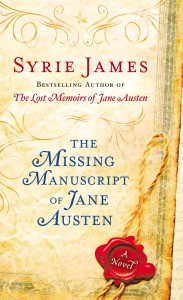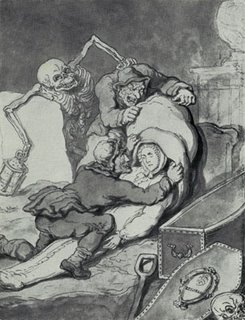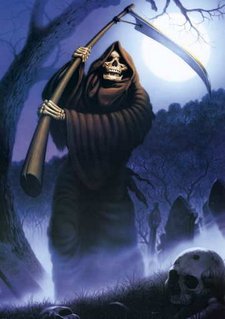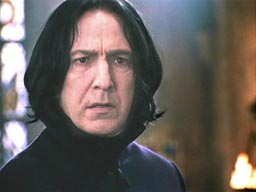I’m recycling a post from a few years ago about Mary Shelley, whose birthday it is today.

 Mary Wollstonecraft Shelley was born on this day in 1797, the daughter of radicals Mary Wollstonecraft and William Godwin. Well-educated and not particularly happy at home (there was some friction between Mary and her stepmother Mary Jane Clairmont), it was only natural that when a handsome young poet showed up, she’d fall in love and run off with him. Mary’s step-sister Claire Clairmont, who later had a torrid affair with Byron, accompanied them to Europe.
Mary Wollstonecraft Shelley was born on this day in 1797, the daughter of radicals Mary Wollstonecraft and William Godwin. Well-educated and not particularly happy at home (there was some friction between Mary and her stepmother Mary Jane Clairmont), it was only natural that when a handsome young poet showed up, she’d fall in love and run off with him. Mary’s step-sister Claire Clairmont, who later had a torrid affair with Byron, accompanied them to Europe.
Shelley already had a wife, Harriet, but these were the heady days of sex, opium, and the sonata form. Godwin, his radical sexual politics put to the test, became estranged from his daughter.
 In the summer of 1816, Shelley, Mary, and Byron were in Switzerland and it was there, in response to a challenge to tell the best ghost story, Mary started to write Frankenstein. After Shelley’s death in 1822 she returned to England and supported herself as a writer until her death in 1851, penning short stories, essays, poems, and reviews, and several other novels.
In the summer of 1816, Shelley, Mary, and Byron were in Switzerland and it was there, in response to a challenge to tell the best ghost story, Mary started to write Frankenstein. After Shelley’s death in 1822 she returned to England and supported herself as a writer until her death in 1851, penning short stories, essays, poems, and reviews, and several other novels.
 I’m not doing justice at all to Mary’s adventurous, unconventional, and sad life, so I encourage you to read a book that does–Passion by Jude Morgan. It’s about the women who became entangled with Byron, Shelley, and Keats, beautifully written, and with a wonderfully strong sense of time and place. It’s also a very sad book–if you know anything at all about these people, you’ll know everything ended badly, particularly for the women.
I’m not doing justice at all to Mary’s adventurous, unconventional, and sad life, so I encourage you to read a book that does–Passion by Jude Morgan. It’s about the women who became entangled with Byron, Shelley, and Keats, beautifully written, and with a wonderfully strong sense of time and place. It’s also a very sad book–if you know anything at all about these people, you’ll know everything ended badly, particularly for the women.
Have you read this book or any other book, fictional or biographical, about the Godwins, Mary, Shelley, Byron et al? Do you have any recommendations?
In blatant self promotion, you can enter a contest at Goodreads to win a copy of Hidden Paradise, which recently got this wonderful review at Heroes and Heartbreakers. Go for it.







 yrie James is the bestselling author of eight critically acclaimed novels, including The Missing Manuscript of Jane Austen, The Lost Memoirs of Jane Austen, The Secret Diaries of Charlotte Brontë, Dracula My Love, Nocturne, Forbidden, and The Harrison Duet: Songbird and Propositions. Her books have been translated into eighteen foreign languages. In addition to her work as a novelist, she is a screenwriter, a member of the Writers Guild of America, and a life member of the Jane Austen Society of North America. She lives with her family in Los Angeles, California. Connect with her on her
yrie James is the bestselling author of eight critically acclaimed novels, including The Missing Manuscript of Jane Austen, The Lost Memoirs of Jane Austen, The Secret Diaries of Charlotte Brontë, Dracula My Love, Nocturne, Forbidden, and The Harrison Duet: Songbird and Propositions. Her books have been translated into eighteen foreign languages. In addition to her work as a novelist, she is a screenwriter, a member of the Writers Guild of America, and a life member of the Jane Austen Society of North America. She lives with her family in Los Angeles, California. Connect with her on her  I had done a great deal of Austen and Regency era research when I wrote my novel The Lost Memoirs of Jane Austen, an education which has been enhanced over the years by additional reading and by JASNA’s many fun and informative conferences and meetings. I’d visited England many times including a wonderful, self-guided Jane Austen tour several years before.
I had done a great deal of Austen and Regency era research when I wrote my novel The Lost Memoirs of Jane Austen, an education which has been enhanced over the years by additional reading and by JASNA’s many fun and informative conferences and meetings. I’d visited England many times including a wonderful, self-guided Jane Austen tour several years before.


